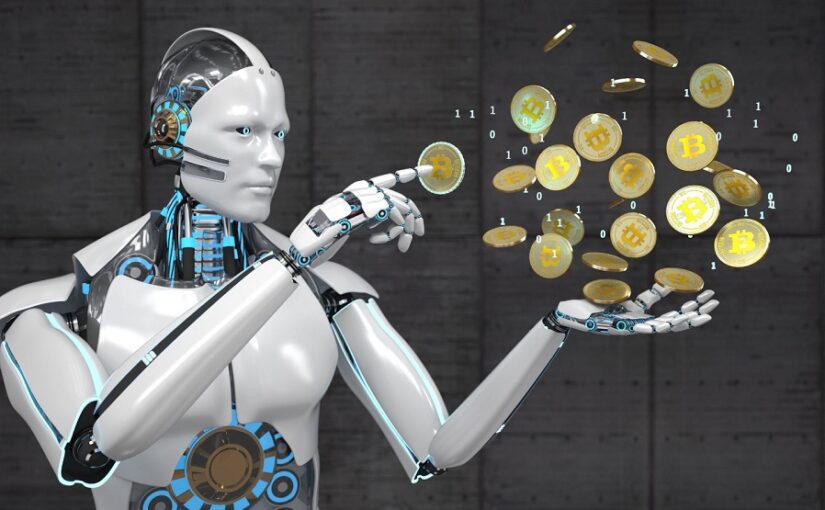When it comes to the world of finance, the forex market stands out as a bustling hub of opportunities for traders and speculators. With a daily trading volume exceeding a whopping $6 trillion, the forex market’s liquidity and potential for profits are unparalleled. In recent years, the introduction of Artificial Intelligence (AI) and Machine Learning (ML) has breathed new life into forex trading, empowering traders with cutting-edge tools and strategies to navigate this complex landscape. Let’s take a look at these two aspects of AI in Forex Trading.

Understanding AI in Forex Trading
AI in forex trading is like having a smart assistant on your team to help with small and larger tasks. It involves using advanced algorithms and machine learning techniques to analyze historical data, spot patterns in assets, and predict future price movements in the market. This futuristic approach transcends traditional human decision-making by allowing AI-driven systems to process enormous amounts of data in real-time and make informed trading decisions based on predefined strategies. Are there traders making use of these systems today? Renaissance Technologies, a prominent hedge fund, has gained fame for its extensive use of AI and machine learning to develop quantitative trading strategies.
Benefits of AI in Forex Trading
2.1 Enhanced Market Analysis: AI is like a keen observer, continuously scanning through various data sources such as market news, economic indicators, and social media sentiment. This helps traders gain valuable insights and a deeper understanding of market trends, giving them an edge in decision-making. Many of the tools available to the public do not allow for modern news sourcing, so private AI engines are required.
2.2 Real-time Data Processing: Time is money in forex trading, and AI-powered systems excel at processing vast amounts of market data instantly. With real-time information, traders can respond quickly to market changes and seize potential opportunities before they slip away.
2.3 Risk Management: AI is an excellent risk manager. By carefully evaluating market risks and adhering to predefined parameters, it helps traders safeguard their capital and minimize potential losses. Forex is a very risky market with leveraged purchases making it not ideal for small investors.
2.4 Elimination of Emotional Bias: Human emotions can sometimes lead traders astray due to fear and greed. However, with AI in the driver’s seat, emotions take a backseat, and decisions are made based on data and predefined strategies, resulting in more rational and objective choices.
Types of AI Applications in Forex Trading
3.1 Sentiment Analysis: Imagine having an AI that can gauge the market’s mood by analyzing social media sentiment, news articles, and other textual data. Such analysis can provide valuable insights into how sentiment influences market movements, helping traders make better-informed decisions.
3.2 Pattern Recognition: AI is like a master detective, uncovering intricate patterns in historical price data. These patterns often serve as indicators for potential market reversals or trend continuations, equipping traders with more accurate predictions.
3.3 Automated Trading Systems: AI-driven trading bots work round the clock like tireless assistants, executing trades automatically based on predefined algorithms. This ensures that traders can capitalize on global market movements and adapt to changing conditions without missing a beat. I personally would not trust an AI system to make trades as human interpretation of the data is more reliable.
3.4 Forecasting and Predictive Modeling: AI is a proficient fortune-teller. It creates predictive models that forecast future price movements using historical data and market indicators, providing traders with valuable insights to inform their decisions.
Challenges and Risks
4.1 Overfitting: AI, like any smart tool, has its limitations. It can fall prey to overfitting, where it performs exceptionally well on historical data but struggles to adapt to new market conditions. Therefore, careful validation of AI models is crucial for ensuring their effectiveness. Find some trades that work for you and use the AI tools to discover these trades.
4.2 Data Quality: AI relies heavily on the quality and relevance of data. If the data used is flawed or outdated, it may lead to inaccurate predictions and trading losses.
4.3 Regulatory Concerns: As with any disruptive technology, AI in forex trading raises some regulatory concerns. Authorities must ensure that these technologies are not causing market distortions or harming retail investors.
Conclusion
Embracing AI in forex trading is like welcoming a savvy partner into your financial endeavors. With its transformative capabilities, AI offers traders a distinct advantage, streamlining market analysis, automating trading processes, and empowering more informed decisions. While understanding the limitations and potential risks is essential, integrating AI effectively can pave the way for a dynamic and technologically advanced trading environment. By combining human expertise with AI’s analytical prowess, traders can unlock the full potential of this powerful alliance, elevating their forex trading journey to new heights.
Embracing the Power of AI in Forex Trading by Steve


